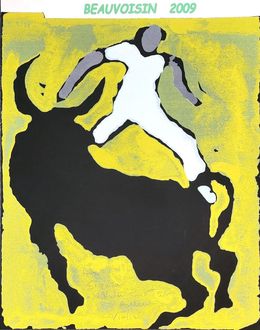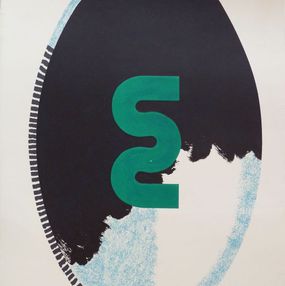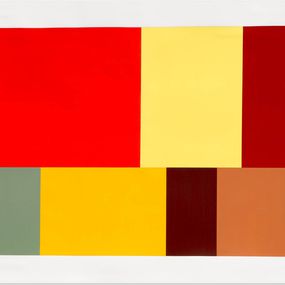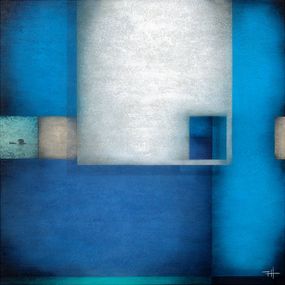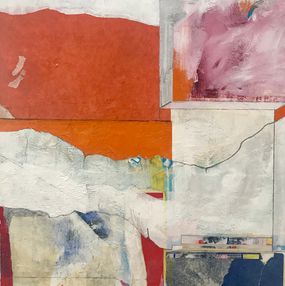

Painting is a reflection on forms and colors.
Biography
Claude Viallat, born in Nîmes in 1936, is a contemporary French painter. He trained as an artist at the École des Beaux-Arts in Montpellier from 1955 to 1959, then at the École des Beaux-Arts in Paris in 1962-1963, where he studied in Raymond Legueult's studio.
In 1966, Viallat adopted a process based on the use of prints, marking a radical break with lyrical and geometric abstraction through the technique known as All-over. He repeated a neutral form, neither natural nor geometric, on a free canvas without a stretcher, thus determining the composition of his works. In 1969, he became a founding member of the Supports/Surfaces group, a movement that challenged the traditional conventions of painting.
In addition to the success of his exhibitions in France, notably at the Centre Pompidou in 1982, and abroad, such as at the Venice Biennale in 1988, Claude Viallat has also devoted himself to teaching. He has taught at several art schools, including Nice, Limoges, Marseille and Nîmes (where he was director for many years), and at the École Nationale Supérieure des Beaux-Arts in Paris.
Claude Viallat's sculptures are rooted in contemporary Chinese culture, while at the same time offering a subtle and pertinent understanding of the West. His approach to painting is reminiscent of Chinese calligraphy, where the resulting harmony of form is also a harmony of gesture. To paint, Viallat crouches over his supports, transforming this gesture into genuine creative gymnastics. Viallat's work is to be understood as a single principle with multiple ramifications and necessary internal metamorphoses. In 'Fragments', published in 1976, he wrote: 'The notion of repetition, of series or repetitions, becomes a de facto necessity. [...] A canvas - a piece - alone is nothing; it is the process - a system - that is important.
Now retired, Claude Viallat continues his exploratory research, leaving an indelible mark on the world of contemporary art through his unique and innovative approach to painting.
From October 27, 2023, to March 3, 2024, the Carré d'Art in Nîmes hosted a retrospective of Claude Viallat, attracting over 15,000 visitors. The exhibition covered the entire museum space, from floor to ceiling, offering a fully immersive experience in his work. In 2023, the Galerie Templon in Brussels presented new works by the artist, exploring innovative techniques and materials, enriching his chromatic palette and artistic approach. Set to open in 2025, the Claude Viallat Foundation, located in the former Saint-Joseph Chapel in Nîmes, will provide a permanent space for his work, solidifying his legacy in his hometown.
Nationality
Categories
Artistic movements
Themes

